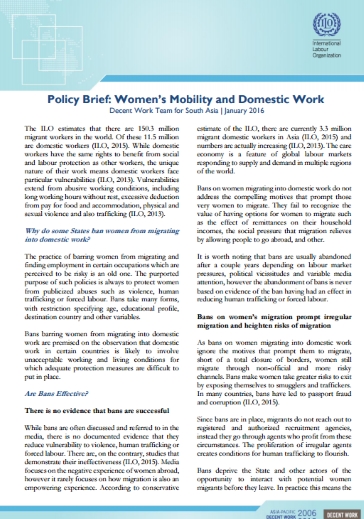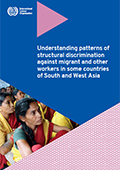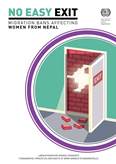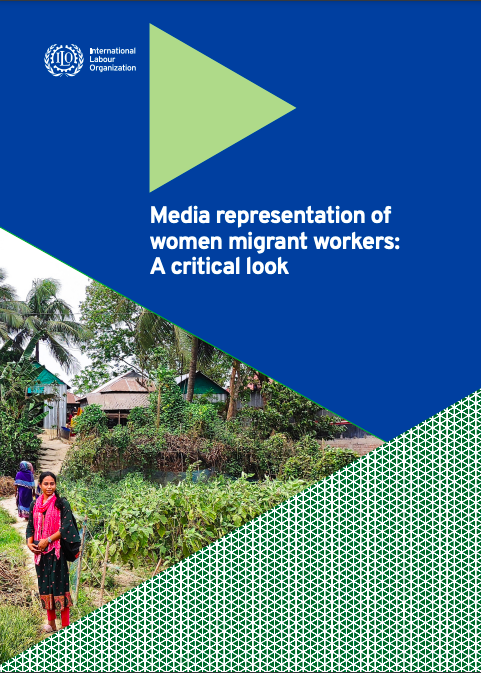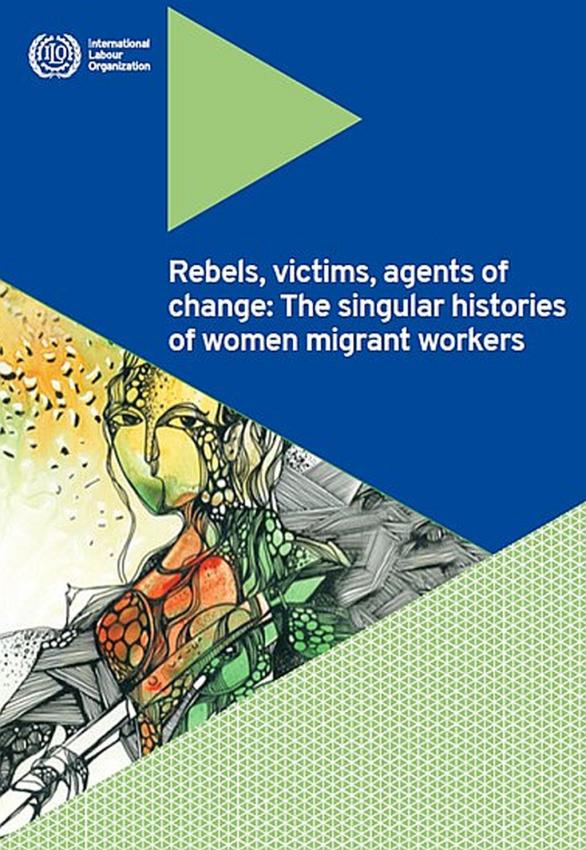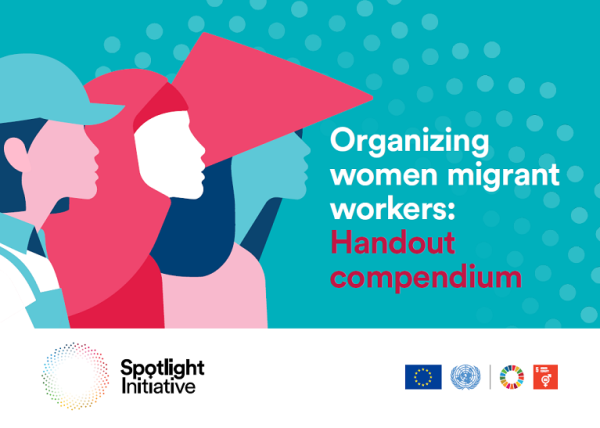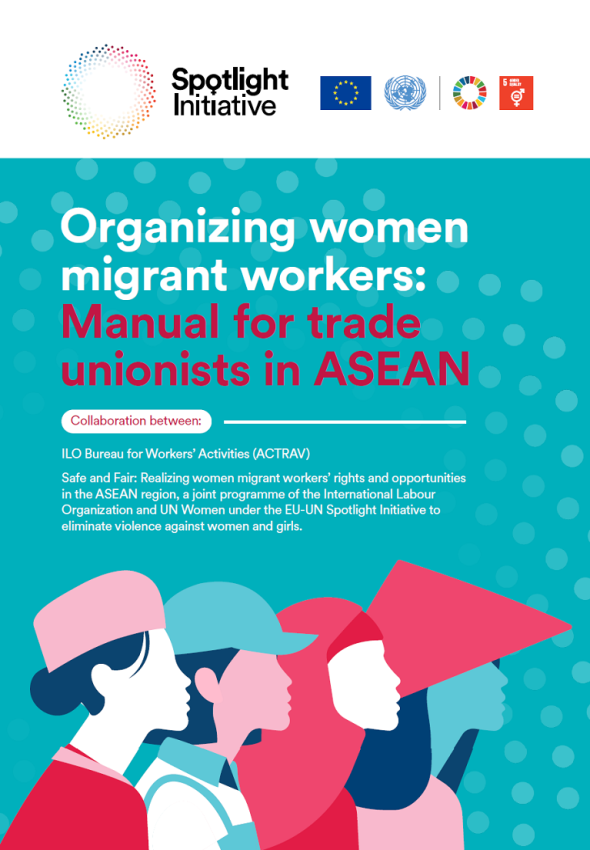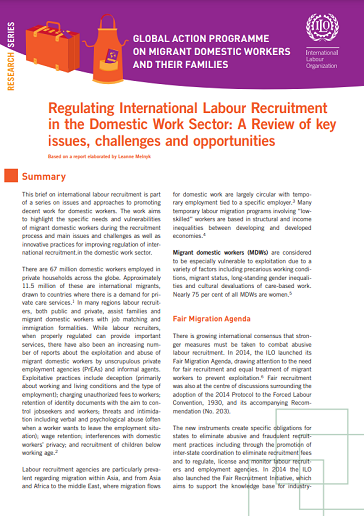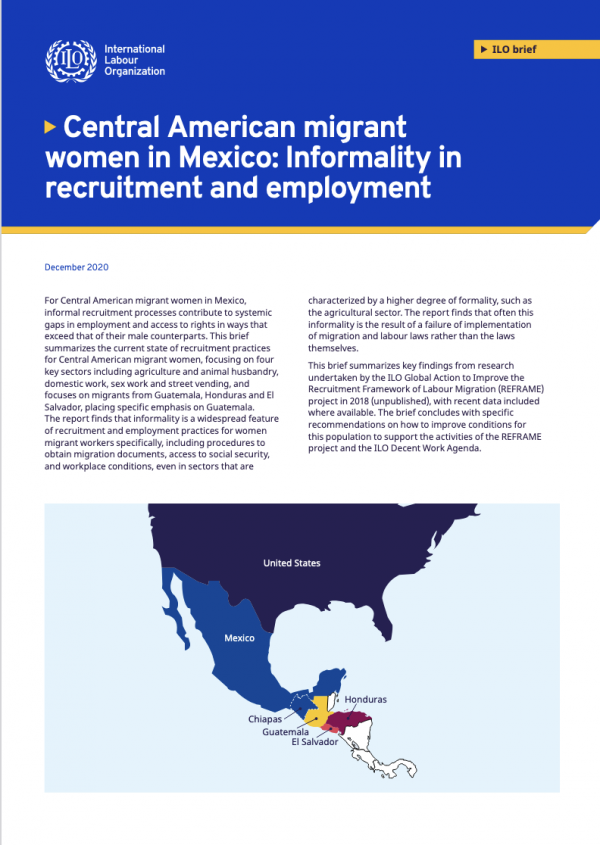Policy Brief: Women’s Mobility and Domestic Work
The ILO estimates that there are 150.3 million migrant workers in the world. Of these 11.5 million are domestic workers (ILO, 2015).
Type of document :
Country/Region :
Year of publication :
Theme : , ,
Understanding patterns of structural discrimination of migrant and other workers in some countries of South and West Asia
This background paper reviews the literature that sheds light on the structural patterns of discrimination against migrant workers in some countries of South and West Asia. It also articulates recommendations that would help officials in UN agencies, international organizations, constituents and other civil society individuals and groups, while referring to the existing evidence of structural discrimination to support the application of international labour standards.
While references to international non-discrimination standards do occasionally surface in public discourses, this paper reviews evidence that discrimination in the world of work is not only characterized by socially deviant cases of discriminatory abuse, as reported in the media, but is rather intrinsic to the way various market economies and political systems are structured. This is manifested by indicators of privilege for some and indicators of deprivation for those at the bottom of the social and political hierarchies, including the interaction between both.
Type of document :
Country/Region : , , , , , , ,
Year of publication :
Theme : , , , , ,
No easy exit – Migration bans affecting women from Nepal
The ILO undertook this study with the Global Alliance Against Trafficking in Women (GAATW). It explores whether Nepal’s age ban deterred younger women from migrating for domestic work and improved working conditions for women migrant domestic workers over 30 years of age. It also explores to what extent the age ban and other bans have had unintended consequences for women, including an increase in irregular migration and trafficking in persons. Finally, it highlights steps the women themselves propose be taken to improve their migration experiences.
Type of document :
Country/Region :
Year of publication :
Theme : , , , ,
Media representation of women migrant workers: A critical look
The study reviews how overseas women migrant workers are characterized in print and electronic media in accordance with gender, class and geographic stereotypes. It critically assesses how women's multiple roles as workers, earners, investors, mothers and daughters, etc. are overshadowed by simplistic narratives focusing on exploitation and victimhood.
This study is based on migration-related news published in four widely circulated national English and Bangla dailies and reports aired on three television channels. The study is an in-depth analysis of the news articles and videos published and diffused between 2015 and 2021. Findings depict a majoritarian bias focusing on individual cases illustrating highly abusive women’s labour migration experiences to attract readership and viewership. Yet, reporting on how women’s labour migration also emancipates them in the context of work, family and social lives was found to be rare, thus leaving and cultivating a common perception conflating all women’s migration with abuse. Considering that such narratives reinforce a false perception that the solution to such abuses is to ban women’s migration, the analysis concludes that while human rights violations faced by migrant workers must be addressed, coverage exclusively focusing on abuses is socially dis-empowering to women and more nuanced reporting on women’s labour migration is needed.
Type of document :
Country/Region :
Year of publication :
Theme : , , , , , ,
How service delivery for women migrant workers and their families in construction sector are strengthened in Thailand
Posted at February 16th 2023 12:00 AM | Updated as of February 16th 2023 12:00 AM
Region/Country : ,
|Themes : , , , ,
Rebels, victims, agents of change: The singular histories of women migrant workers
The purpose of this ethnographic study is to shed light on how women view their migration and work abroad. The findings challenge conventional narratives on labour migration of women and bring out important perspectives that invaluably inform policymaking.
The research provides in-depth qualitative data on women labour migration, free of a priori judgment in a context where such activity remains contested in many parts of society. The aim is to present on women’s migratory journeys and in the process re-visit these gender constructions, as well as the social class ranking that associates honour and rank with a specific gender order. It is an important reference for academics, activists and Government practitioners.
Type of document :
Country/Region : ,
Year of publication :
Theme : , , , ,
Organizing women migrant workers: Handout compendium
This handout compendium is meant to be used with the training manual "Organizing women migrant workers: Manual for trade unionists in ASEAN".
This handout compendium is a part of the training manual "Organizing women migrant workers: Manual for trade unionists in ASEAN". The handout compendium is meant to be used with the training manual. The training manual was produced jointly by the ILO Bureau for Workers’ Activities (ACTRAV) and the programme Safe and Fair: Realizing women migrant workers’ rights and opportunities in the ASEAN region. ACTRAV and Safe and Fair aim for this training manual and handout compendium to enable trade unions to address the specific needs of women migrant workers, bringing these two elements to
Type of document :
Country/Region :
Year of publication :
Theme : , , , ,
Organizing women migrant workers: Manual for trade unionists in ASEAN
This training manual was produced in collaboration between ILO Bureau for Workers’ Activities (ACTRAV) and Safe and Fair: Realizing women migrant workers’ rights and opportunities in the ASEAN region, a joint programme of the International Labour Organization and UN Women under the EU-UN Spotlight Initiative to eliminate violence against women and girls.
Trade unions regionally and globally often work on either migrants’ issues, or on gender equality and women’s empowerment. ACTRAV and Safe and Fair aim for this training manual to enable trade unions to address the specific needs of women migrant workers, bringing these two elements together.
This training manual was produced jointly by the ILO Bureau for Workers’ Activities (ACTRAV) and the programme Safe and Fair: Realizing women migrant workers’ rights and opportunities in the ASEAN region. Safe and Fair is jointly implemented by the ILO and UN Women, under the multi year European Union–United Nations Spotlight Initiative to end violence against women and girls.
Type of document :
Country/Region :
Year of publication :
Theme : , , , ,
Regulating international labour recruitment in the domestic work sector: A review of key issues, challenges and opportunities
Based on a report written by Leanne Melnyk. It addresses the process of international recruitment of workers and highlights both the specific needs and vulnerabilities faced by migrant domestic workers, as well as the main issues and challenges, and innovative practices for better regulation of international recruitment in the domestic work sector.
Type of document :
Country/Region :
Year of publication :
Theme : , , , , ,
Central American migrant women in Mexico: Informality in recruitment and employment
This brief summarizes key findings from research undertaken by the ILO Global Action to Improve the Recruitment Framework of Labour Migration (REFRAME) project in 2018 (unpublished), with recent data included where available. The brief concludes with specific recommendations on how to improve conditions for this population to support the activities of the REFRAME project and the ILO Decent Work Agenda.
Type of document :
Country/Region :
Year of publication :
Theme :
Subscribe to the Fair Recruitment Initiative Newsletter
Sign up to receive news delivered to your inbox.

